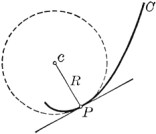Donors, Volunteers or Board Members: Who Do You Need the Most?
Posted: August 8, 2013 Filed under: Polls | Tags: board members, nonprofit donors, nonprofit resources, nonprofit volunteers Leave a commentApplying some Geometry to your Nonprofit Fundraising
Posted: May 29, 2013 Filed under: Abbreviate | Tags: cultivation, nonprofit donors, nonprofit funding, Nonprofit organization, nonprofit resources, nonprofit vision, small nonprofits 1 Comment The famous mathematician Carl Friedrich Gauss was quoted as saying: “I have had my results for a long time: but I do not yet know how I am to arrive at them.” Charities often know how much funding they need but aren’t quite sure how to get it.
The famous mathematician Carl Friedrich Gauss was quoted as saying: “I have had my results for a long time: but I do not yet know how I am to arrive at them.” Charities often know how much funding they need but aren’t quite sure how to get it.
Let’s start with Vision. What are your small nonprofit’s most critical needs? Looking into the future, what are the biggest obstacles and opportunities in your organization? How do you show efficiency through an ideal use of resources? Represent your Vision inside a circle.
Next consider Impact. How can a contributor specifically make a difference in helping your organization to realize its Vision? Even more importantly, why will that difference be greater than the impact derived from giving to a competitor? Represent Impact as a line, remembering that, in geometry a line is straight and never-ending. That’s just like many donors who have their eyes set on particular causes or geographies and are often hesitant to veer off that path.
Your goal? It is not to paint an attractive but unrealistic Vision; nor is it to twist to donor wishes. Your goal is to find the point of tangency between your Vision and desired donor Impact.
Where the two meet is your CONNECTION. To consistently make this important connection, find the sequence of cultivating events to be followed as well as the desired outcomes.
And, once you have found the secret sauce, enjoy it over and over.
_____________________________________________________________________________________
Get your free copy of the Multiplying Good blueprint at Wobbly Nonprofit .
Quote from General George Patton
Posted: May 20, 2013 Filed under: Quotes | Tags: nonprofit donors, Nonprofit organization, nonprofit success, small nonprofits Leave a comment“The test of success is not what you do when you are on the top. Success is how high you bounce when you hit the bottom.”
Many nonprofit organizations never tap their full potential. That means donors didn’t get their moneys worth. Clients, employees and communities may not have received full benefits either. The mission of Wobbly Nonprofit is to help small nonprofit organizations unlock their true power. A charitable organization should be light in spirit and possess the ability to rebound quickly from setbacks. The vision of Wobbly Nonprofit is to produce resilient nonprofit organizations with the increased ability to make a difference in people’s lives.
Weigh In: Getting corporate support
Posted: May 14, 2013 Filed under: Polls | Tags: Board of directors, nonprofit donors, Nonprofit organization, nonprofit polls Leave a comment7 tips to help small nonprofits break new ground
Posted: April 25, 2013 Filed under: Orchestrate, Quotes | Tags: nonprofit donors, nonprofit funding, nonprofit legacy, Nonprofit organization, nonprofit return on investment, nonprofit think differently, nonprofit visibility, nonprofit volunteers 1 Comment“Freedom is always and exclusively freedom for the one who thinks differently.”
This quote from philosopher and activist Rosa Luxemburg hits home for nonprofit organizations.The state and federal governments are struggling, with serious funding implications for nonprofits. The US economy is still trying to gain traction. At the same time, the demand for charitable services is increasing. Realizing it could be a long-term situation, is your organization ready to meet this challenge? How are you thinking differently? Here are some tips for creating a climate that can help you to break new ground.
- Get creative in rewarding employees.
- Widen your net through increased visibility to potential donors, volunteers, vendors and clients.
- Become a viable competitor.
- Throw “penny-wise and pound-foolish” ideas out the window.
- Openly raise the bars of expectation.
- Implement a formal process improvement program.
- Make return on investment a focal point.
Following the crowd can become a bad habit. Remember that the leader of an orchestra always keeps his back to the crowd. Start looking at your organization from new vantage points. Think differently. That may help to preserve the freedom of your future decisions as well as the organization’s legacy.



You must be logged in to post a comment.